Stories from the Edge of Music #58: JOE BOYD — THE BEST (AND BIGGEST) BOOK ON WORLD MUSIC
Plus, a Jeff Healey story and my top 10 concerts
Joe Boyd is one of those Boston-area Americans who’s more a Brit than a Yankee. And he’s the best story teller I’ve ever met.
+++++++++++++++++++++++++++++++++++
LAUNCHING A MONUMENTAL NEW BOOK ON GLOBAL MUSIC
I first came across Joe Boyd on a tour bus in London in 1964.
He was as visible as I was, since everyone else on the bus, trundling through London traffic, was Black: Sonny Terry and Brownie McGhee, Muddy Waters and Otis Spann, Sister Rosetta Tharpe, Cousin Joe Pleasant and Willie Dixon. These quintessential American musicians were the cast of the American Blues and Gospel Caravan, along with an all-star backing band — and Joe was their road manager.
Somehow, we weren’t introduced, but I watched him handle and organize this motley crew of musicians with tact, empathy and firmness.
That tour, perhaps, would be one of the most overlooked items on his résumé, if you were to read it today. After all, this was man who had produced pioneer recordings by pioneering British folk artists: Fairport Convention, Sandy Denny, Nick Drake, Billy Bragg.
He’d run his own label — Hannibal Records — and along the way produced Pink Floyd’s first single, ran an influential “underground” London music club, tried to produce the joyfully eccentric Mary Margaret O’Hara, worked on the sound crew at Newport when Dylan “went electric,” and made albums with R.E.M. and 10,000 Maniacs.
To top it off, he wrote White Bicycles, an hilarious account of the British music scene in the ’60s.
And now here he was — just a few weeks ago — in Toronto launching his second book.
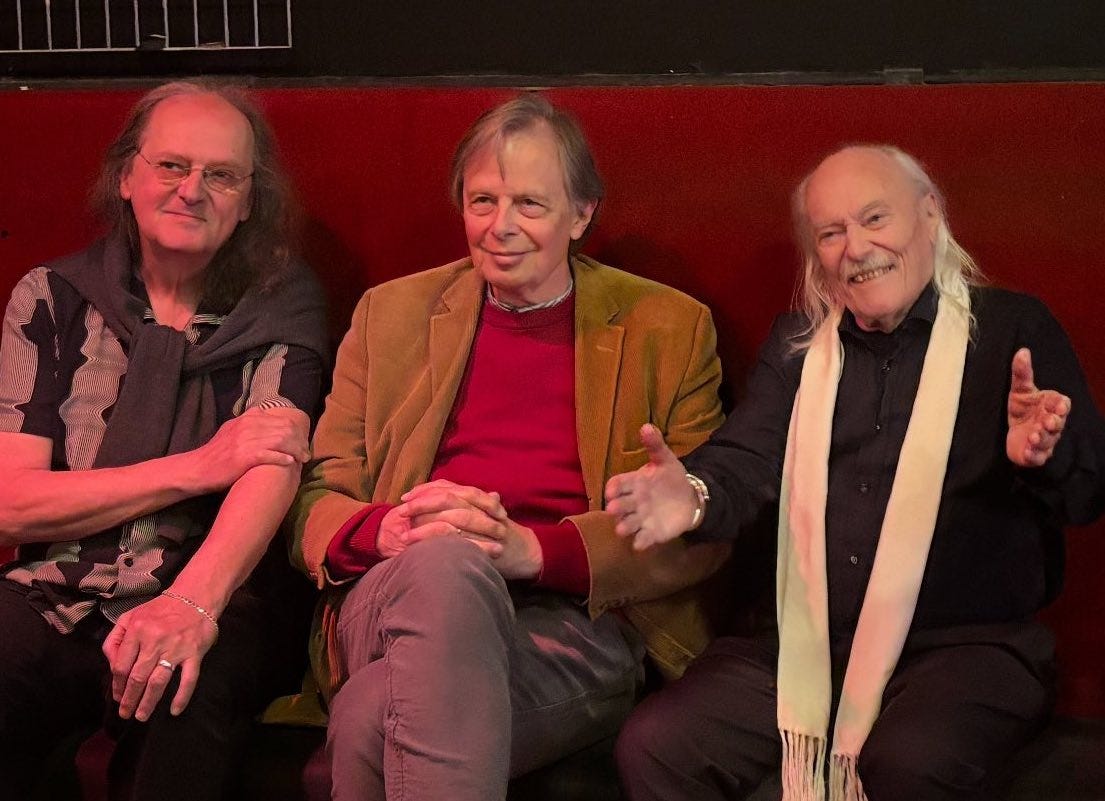
They don’t make books like this anymore…
And the Roots of Rhythm Remain is daunting. It’s 851 pages long, with 32 pages of photographs, a 64-page listing of sources, and a comprehensive index. I don’t have a scale here, so I can’t tell you how much it weighs (ed. It’s 3 lb., 2 oz.), but Joe told me he was fine with me using it as a doorstop once I’d finished reading it.
It took Joe Boyd 15 years to write it.
The title of the book comes, of course, from a Paul Simon lyric — and the book’s theme is the inter-connectedness of what Boyd calls “global” music. The book starts, indeed, with a discussion of one of the most popular global music records of all time — Simon’s Graceland, recorded in South Africa during the period before the collapse of apartheid and when European and American artists were, in the main, refusing to perform there.
When he spoke in Toronto at the book launch, Joe recounted meeting the artist, who played the tracks to him — without the vocals, which had not yet been recorded.
As Boyd listened to the music on a handheld tape recorder, Simon sang the lyrics to him. “Do you think it will sell?” asked the songwriter.
++++++++++++++++++++
Summing up the book launch
My friend Michael Barclay was one of the 60-odd people at the book launch, and here’s what he wrote on his Substack, That Night in Toronto, last week.
“Wasn’t sure what to expect at an event for an 82-year-old man who just published a book more than 900 pages long, on the rather broad topic of music from everywhere but Western Europe and North America.
“Boyd is handsome in a patrician way that looks like he went to Harvard (he did). He also lectures like he teaches at Harvard — in the sense that you feel like you’re in the presence of one of the world’s best, a foremost expert in their field.
“So to a room full of most of Toronto’s biggest music nerds (writers, promoters, musicians), Boyd gave a two-hour spiel — with intermission! — telling stories about South Africa, Cuba, Roma music, and much more, with a slide show and musical examples. It was a master class.
“And let’s face it: this book is review-proof… Buy it, put it on your shelf, read one chapter at a time, at your leisure. It’s a long-term investment for any serious music fan.”
++++++++++++++++++++++++++++++++++++++++++++++++++++++++++
WHAT ARE YOUR TOP TEN CONCERTS?
FOR WHAT IT’S WORTH, HERE ARE MINE
Writer Nick Jennings recently asked me to list the top five concerts in Toronto — an impossible assignment. After all, I go to a lot of live shows (128 last year, but only 31 so far in 2025), and I may have seen more shows, back in the day, than you did!
That said, if Nick had asked you, what shows would have been on your list?
I sent him a very personal list: a Top Ten rather than a Top Five. And if he asks me again, I’ll probably send him a totally different list!
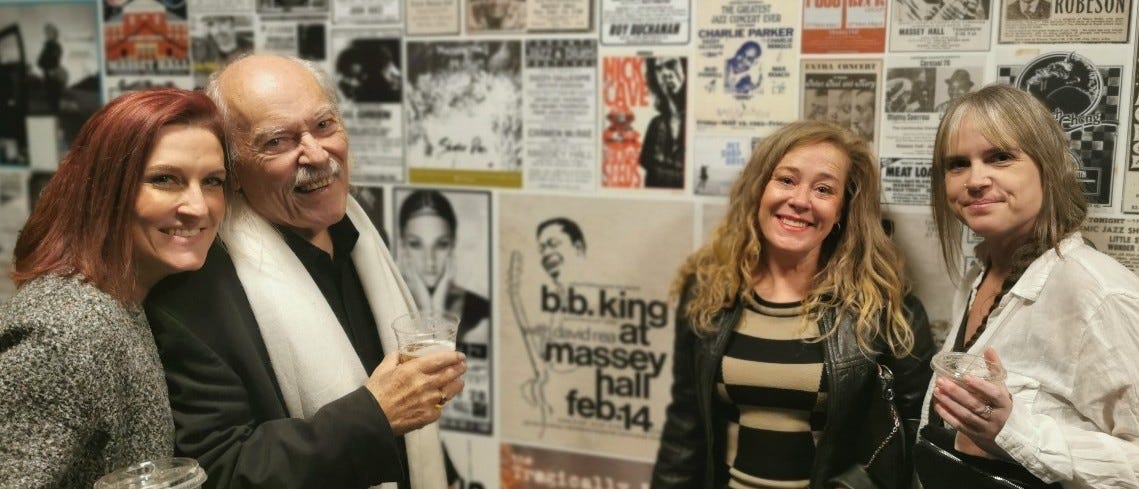
1) 1957 — Earl Hines at the Colonial (my first musical experience in Canada)
2) 1961 — Sleepy John Estes at the First Floor Club (the first live concert promotion I ever did)
3) 1968 — B.B. King at Massey Hall (his first major concert in Canada — two weeks before he had appeared at a small concert in Kingston; I went with Adam Mitchell and Buddy Guy)
3) 1970 — Bobby Blue Bland, Buddy Guy, and the final show by Lonnie Johnson before he died. This was also at Massey Hall. (The promoter lost money and next morning quit his 2½-pack-a-day cigarette habit)
4) 1972 — Neil Young, Bob Dylan, Joni Mitchell and James Taylor all show up at the Mariposa Folk Festival on Toronto Island
5) 1972 — John Prine and Steve Goodman at Convocation Hall at the University of Toronto
++++++++++++++++++++++++
The bonus five shows
6) 1957 — Fats Domino, Chuck Berry, Clyde McPhatter, the Everly Brothers, Frankie Lyman, Lavern Baker, the Crickets (before it was Buddy Holly and the Crickets) and 16-year-old Paul Anka, all on one show at Maple Leaf Gardens. The top ticket price: $2.50
7) 1982 — Richard and Linda Thompson finally break up, at their final show at the Horseshoe Tavern
8) 2024 — Loreena McKennitt Christmas concert at Koerner Hall
9) 2022-2025 — Nyssa, Charlotte McAfee Brunner (Trombone Charlotte), MIP, Jay Vinyl — all personal discoveries, proving this town is full of superb new talent
10) 2019 — finding Corin Raymond at the Cameron
++++++++++++++++++++++++++++++++++++
AVOID GOOD LOOKING PEOPLE WHO KNOW THEY’RE GOOD LOOKING: A JEFF HEALEY STORY
When the Downchild Blues Band marked its 25th birthday (some 30 years ago!) their publicist came up with an idea. Have the band play for 10 nights in Grossman’s, the amiably grungy Toronto bar where they had begun.
We could bring in different guests (friends and former members of the band), charge $10 at the door and walk away with a decent amount of money, and maybe get some print, radio and TV coverage.
It worked. The band was featured on the nationally seen Adrienne Clarkson Show on CBC-TV, the local newspapers said nice things, and there were radio interviews. (Ms. Clarkson later became the Governor General of Canada; she didn’t lower herself to come to Grossman’s for the show, recording her intro in the cleaner surroundings of the CBC studios.)
Prominent on the band’s guest list were Downchild’s first singer, Richard “Hock” Walsh, Daniel Lanois (who engineered the band’s first two albums), First Nations singer Murray Porter, and blues rock star Jeff Healey, who had also begun his career at Grossman’s.
When Jeff arrived to join the celebrations, he came with his band, drummer Tom Stephen and Joe Rockman on bass. Two tall, leggy young models arrived with the drummer.
One of them, close to six feet tall and stunningly beautiful, discovered I was organizing the event. “So,” she said haughtily, looking down at me, “where are the dressing rooms?”
Her companion, equally tall and equally beautiful chimed in: “Is there a full length mirror?”
They patiently explained, as if to a six-year-old, that they were the band’s dressers.
“Dressers?” I queried incredulously. This was, after all, Grossman’s, one of the seediest bars in the city. “Yes,” one of them told me. “We dress the band, so they look good on stage.
“So where is the dressing room?”
Losing both patience and temper, I told them: “See that door marked ‘MEN’? Go down there, walk past the urinals (watch out for the wet floor) and you’ll see a metal door. Open it and go in; the light switch is on the left.
“It’s called the potato room. That’s where the joint stores the food and the supplies and the cleaning equipment. And that’s the dressing room.”
I turned away, thoroughly annoyed. Over my shoulder, I added: “And, no, there’s no mirror.”
++++++++++++++++++++++++++++++++++++
FESTIVALS: THANK HEAVENS, THE SUMMER’S COMING
Mariposa Folk Festival news: Orillia, the festival’s hometown and the birthplace of the late Canadian singer and songwriter Gordon Lightfoot, will host two concurrent exhibitions at the town’s Museum of Art and History.
Gordon Lightfoot: Turning Back the Pages will be a permanent exhibition, while Voices Through Time: A Mariposa Journey is a temporary exhibition celebrating the 65th anniversary of what it rightly calls the country’s most iconic music festival.
“We’re overjoyed about the two exhibitions launching together,” said the museum’s executive director, Ninette Gyorody. “Orillia is blessed to be the home of both Gordon Lightfoot and the Mariposa Festival and the museum is honoured to tell some of their stories.”
Both exhibitions are slated to open to the public on June 14, 2025.
The Calgary International Blues Festival has a new home after being summarily ousted from their long-time home at Millennium Park. I hope to see you at the Confluence (750 9 Ave. SW). And there’s a killer lineup, too! Check the small print for a surprise: I’ll be telling stories!
++++++++++++++++++++++++++++++++++++++
QUOTE OF THE WEEK
“Watch out for the grim, grey expanse of Spotify consuming everything in its path… capitalism’s robot of death for our industry.
“Luckily, you can’t kill artists and musicians. We swerve. ‘Let’s remove ourselves from the game,’ I suggested, ‘Let’s go smaller.’
”We are so trained to capitalism that we don’t ever consider ‘smaller’ an option. Let’s make small batch records and zines again. It doesn’t have to go world-wide. We don’t have to put things up on Spotify, maybe just two or three songs to advertise (though, I don’t even want to be that involved with them…) and call it good.” —
on Substack,++++++++++++++++++++++++++++++++++
I GIVE IN. YES, THERE WILL BE A PAYWALL AFTER ALL
In the last month, this humble Substack gained 99 new subscribers, thanks in large measure to recommendations from my friend
’s Substack, . Two of the 99 became paid subscribers.Some 100 of the 1,030-odd subscribers who follow this Substack actually pay $6 (Canadian) each month, which subsidizes my last remaining vice: caffeine. And makes my old age pension (Social Security, to my U.S. readers) go a little further.
I’ve resisted putting up a paywall but after a lot of thought, I felt I wanted to write about other things as well as music.
Paid subscribers, starting next time, will see much more personal writing, and it’ll be about all the other stuff that’s going on. Look for stories about books I’m reading, the places I go, the people I meet, the folk I know, my family and politics — with occasional discussions about the single life, death, sex, drugs and, very occasionally, rock and roll. Talking, if you will, among close friends.
Meanwhile, I am profoundly grateful to all my subscribers — sharing my memories and my life with you is an amazing privilege, and I certainly don’t take it for granted.




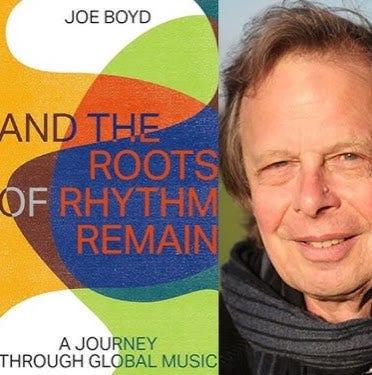
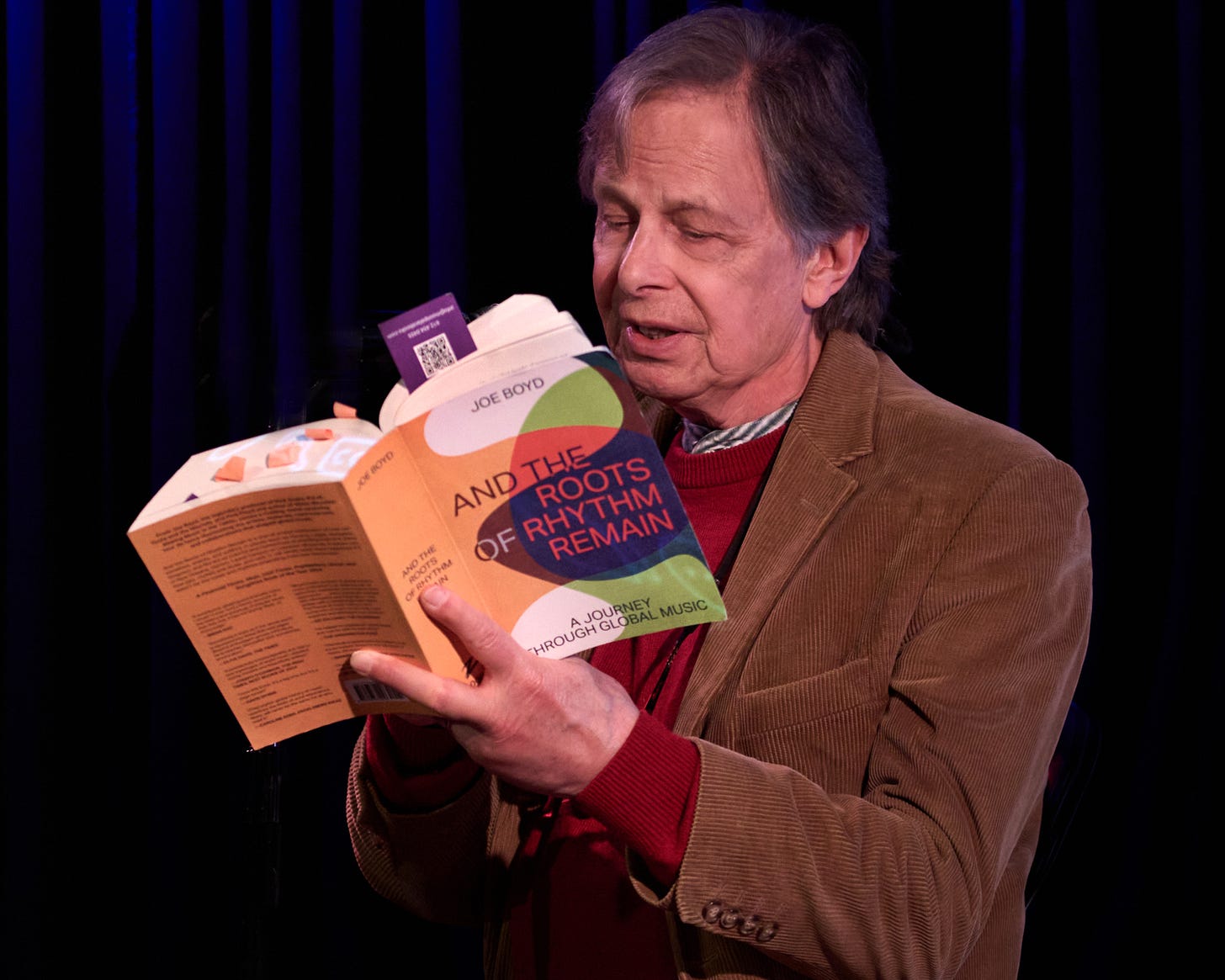
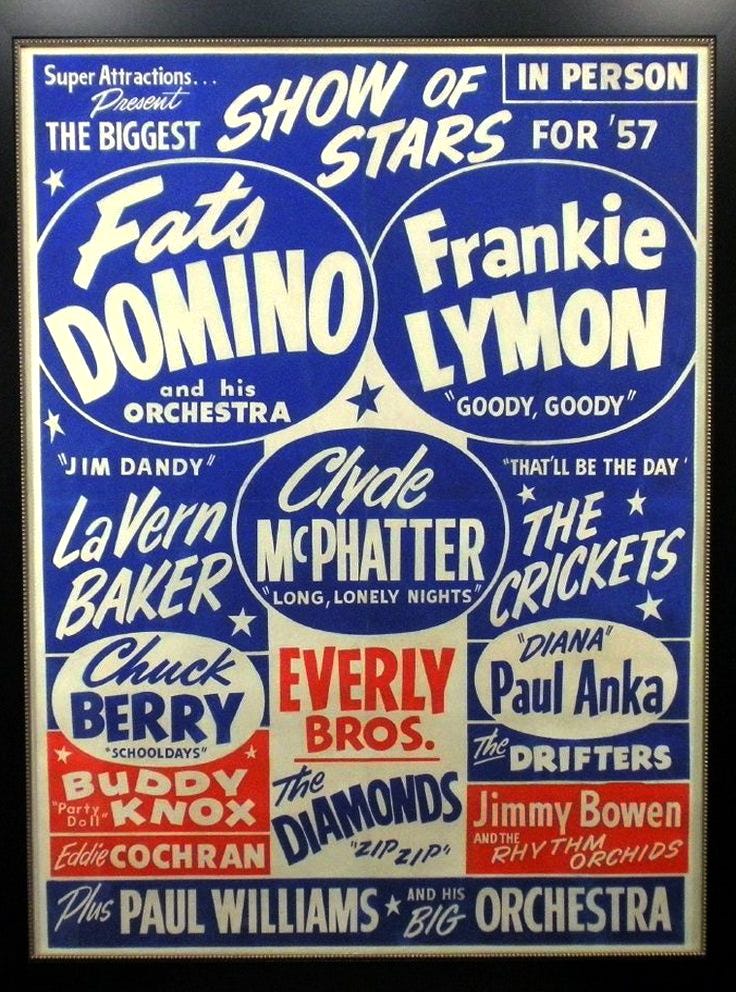

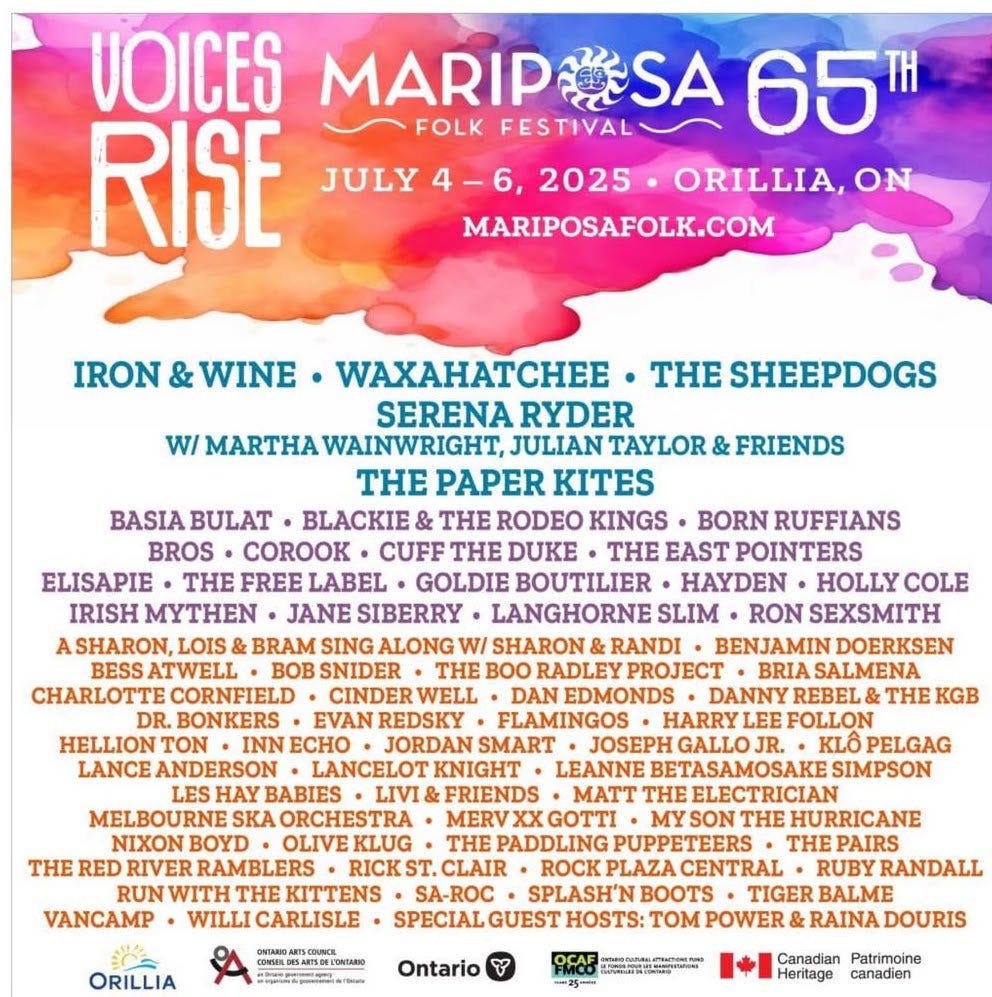
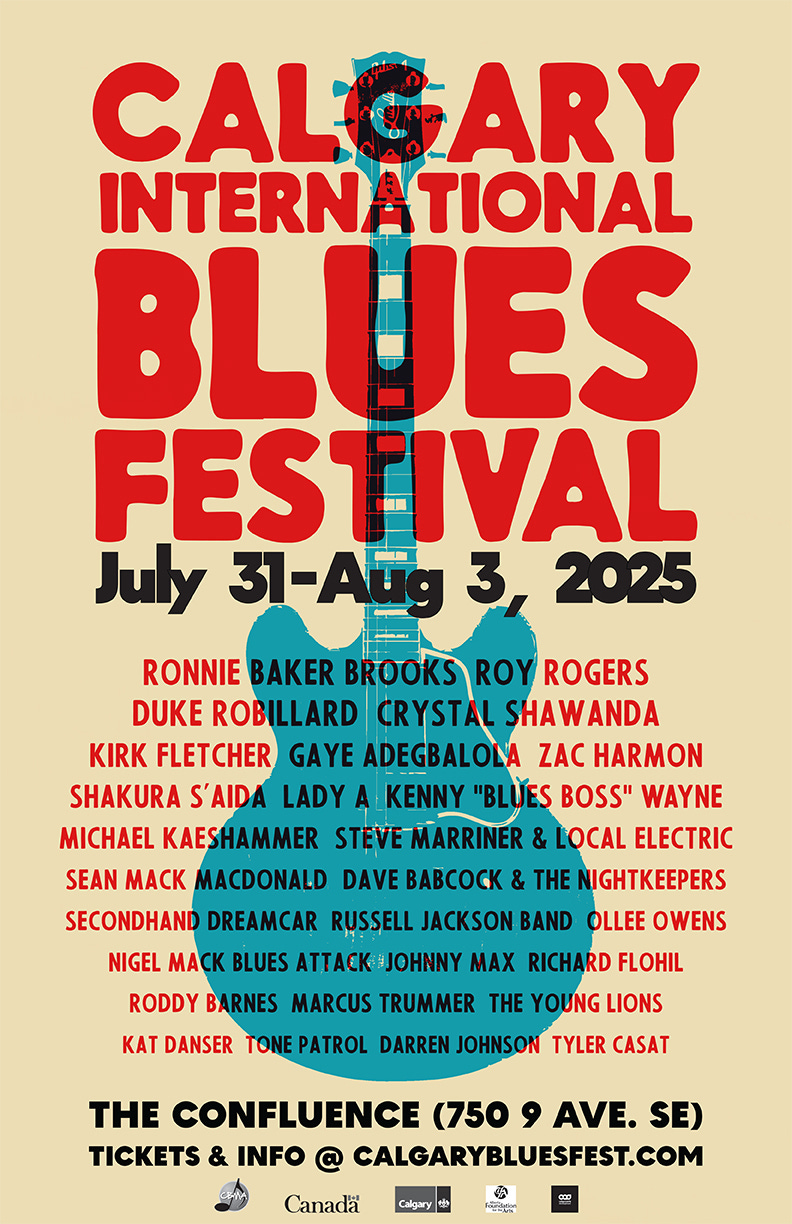
Yes
I've taken many pees at Grossman's but never knew about the potato room.